Google Anthos
Over the past decade, cloud technology has slowly grown in acceptance across the private sector. With a cloud service, your company can transfer all of its preexisting data and system software to a secure, virtual environment. In the cloud, everything is secure and backed up in the event of a local fire, flood, system crash or burglary.
Despite the many advantages of the cloud-based business model, many companies are reluctant to migrate for a multitude of reasons. One common concern is that the cloud would disrupt the integrity of crucial legacy applications, such as those that rely on older software and hardware that would not be compatible within a cloud environment. As a solution to these problems, Google has developed a hybrid solution for cloud migration.
A Brief Intro to Google Anthos
In 2019, Google announced the roll-out of Anthos, the first fully-integrated hybrid cloud services platform from a mainstream tech giant. Anthos is unique among public cloud services because it functions as more than a single service. Instead, Anthos functions as a group of several services that each covers different aspects of the integrated cloud-computing experience. With Anthos, a company of any size can simultaneously operate an on-premise software system in tandem with a cloud-based system.
The Foundation of Anthos – Kubernetes
Google Anthos works with a range of components that cover various aspects of the hybrid cloud environment. Effectively, Anthos is a set of technologies that facilitate the steps involved in on-premise-to-cloud migration. From there, Anthos allows for the easy and secure management of cloud-based systems that interact with on-premise applications. The following technologies complete the Google Anthos solution:
Google Kubernetes Engine
The main feature of Anthos is the Google Kubernetes Engine (GKE), which users access to control the functions of the cloud between the on-premise database and connected cloud services. With GKE, your company can easily connect select components of your private cloud service to components that are open to customers. This allows for seamless communication between staff and customers during select stages of a transaction.
GKE On-prem
Google has offered a platform that supports Kubernetes-based software along with GKE. Users can enact this software platform on a variety of hardware devices that are modern and compatible with Google services. Once enacted on the user’s end, Google handles platform management.
Whenever a change or update is necessary, Google will manage the applications needed to bring things up to date, from patch downloads to next-version software rollouts. GKE On-prem operates as a virtual service over VMware vSphere 6.5. The service can also work with different hypervisors like Hyper-V and KVM, making this one of the most adaptable multi-cloud services.
Istio
With Istio technology, users can have cross-platform network management. The purpose of Istio is to connect a variety of applications across a company’s infrastructure, effectively acting as a grid between the GPC, data center and various cloud components.
Istio is designed to work with various network software programs, including Cisco ACI and VMware NSX, as well as Google’s Andromeda. Companies that are new to Istio can integrate the technology with existing appliances like F5. With Istio, various aspects of your cloud infrastructure can be connected and rendered accessible in a more organized layout for the working departments of your company.
Velostrata
Velostrata technology was purchased by Google in 2018 as an enhancement for Kubernetes. With Velostrata, users gain two key features: the ability to make replicas for Google Compute Engine instances via streamed virtual or physical machines, and the ability to convert virtual machines (VMs) that already exist into applications for Kubernetes. As such, Velostrata functions as the first migration technology that allows physical-to-Kubernetes conversion. This function can be performed through a prompt known as Anthos Migrate, which makes the whole service possible to client businesses that sign up for the service.
Opportunity for the Cloud Native Ecosystem
Google Anthos is designed to make cloud-computing accessible for companies that never imagined that such technology could suit their way of doing business. If there are various aspects of your on-premise system that you would never wish to migrate due to security concerns or application matters, Google Anthos can gradually shift your perspective as you recognize its potential in select areas. The processes of this cloud services platform make it quick and easy for companies to migrate vast sums of content with a few select actions. The following technologies comprise further parts of the Anthos ecosystem:
Anthos Config Management
Kubernetes functions as an expansive and concept-driven service. Google has made every effort to render the management of configurations simple and expedient through the functions of Anthos. This way, users can enjoy the easiest and most seamless experience possible when activating Kubernetes deployments in a range of different environments.
With Anthos Config Management, users can control a number of settings configurations and network policies. These options can be used to change passwords and manage the configuration of single or multiple clusters. The technology can be likened to a centralized, secure repository that encompasses everything pertaining to the policies and settings of a company’s computing infrastructure.
Stackdriver
When it comes to the observation of activities across a company cloud infrastructure, Stackdriver is the Anthos tool that makes it possible for authorized personnel to monitor everything in real-time. Stackdriver is designed with operability in mind, allowing users to track and manage system clusters during each stage of company interactions on a cloud-computing platform.
With Stackdriver, you can pinpoint actions that need to be performed and delegated to the right department. You can also use Stackdriver to examine the day’s logins and detect any suspicious activities. Overall, Stackdriver facilitates a form of centralized monitoring that makes it possible to observe the functions of your company’s cloud activity with a panoramic, aerial view.
Google Cloud Platform (GCP) Cloud Interconnect
With cloud computing, it is crucial to have the fastest connecting speeds possible, especially when you are dealing with vast infrastructure across various departments, both local and abroad, in a large company. GCP Cloud Interconnect provides super-fast connectivity for Google Anthos cloud services. Project updates and communications go into effect in a fraction of a second with no delay or data loss.
Cloud Interconnect is capable of offering speeds up to 100 Gbps. Customers can also link the service with Telco networks from Softbank, Equinix and NTT Communications.
GCP Marketplace
A variety of open source applications and independent software vendors can run on Kubernetes. All it takes is a simple install to make the service compatible with applications like GitLab and the Cassandra database. You can customize functions and deploy select software programs in Google Anthos to suit the needs of your own business.
With upcoming updates, Google is expected to provide a list of apps that are procured by the company’s internal IT staff. In the meantime, early adopters to Google Anthos have taken great satisfaction in the lineup of services offered by the program.
Greenfield vs. Brownfield Applications
The principal concept behind Anthos is to modernize cloud applications for today’s businesses. According to the vision of Google engineers, most organizations of tomorrow will run applications on Kubernetes. It was with that goal in mind that the tech giant acquired programs such as Velostrata, which facilitates VM upgrades to containers.
Google has also designed a plugin that converts ready-made VMs into Kubernetes Pods through the VMware vRealize software. A variety of workloads can also be transferred and enacted in Kubernetes, including MySQL and PostgreSQL, which deploy as StatefulSets. Anthos can also facilitate interconnections between VMs and apps that run on Kubernetes.
How is Anthos Different from AWS and Azure Hybrid Clouds?
Google has embarked on a vastly divergent approach to the standard concept of on-prem hybrid cloud. Since the rollout of its Anthos product, the tech giant has redefined the idea of cloud computing. The purpose of Anthos is to make it easier for IT staff to manage the complicated layers of distribution functions.
The idea was preceded by Microsoft, which was the first tech giant to facilitate hyper-scale cloud operations in a client’s data center via Azure Stack. Following that example, Google and Amazon have since introduced products such as Anthos that make it possible for personnel to harness complex cloud functions.
The common concept behind Anthos, Azure and AWS is that all three are premised on the notion that client businesses require modern, centralized applications to fully harness the range of innovations offered by cloud computing. For Google, the goal has been to take the concept to its ultimate conclusion with an application that can work between various platforms that utilize cloud services and on-premise components. Overall, the purpose of Anthos is to make legacy apps work with a cloud-based framework and also keep select functions available for in-house activation. This requires containers, of which Kubernetes functions as the primary piece of the paradigm.
The centerpiece of Google’s hybrid cloud system is GKE On-prem, which facilitates several options that clients can use to bring legacy applications up-to-date for the new working environment. GKE makes it easier for newly adopting businesses to transfer old hardware into a new working infrastructure. The purpose of GKE is to allow connected applications to run from any location, meaning you can enact select functions when you need them. Depending on the needs or policies of your business, you might move all or some of your data to the cloud and also keep certain functions operating in-house simultaneously.
The main difference between Google Anthos and its main competitors, Microsoft Azure and Amazon AWS, is that GKE technology works with VMware vSphere, which supports an array of customized hardware across a range of VMware OEMs, such as Dell, HPE, Cisco and Lenovo. This way, businesses that already use VMware can make the transition while retaining their legacy environment.
The aim behind Google’s Anthos innovation is to orchestrate and enable a cross-section of micro-services over an array of cloud and on-premise components. The product that enables communications and networking across systems is Google Cloud Service Mesh (GCSM), which employs the tech giant’s Istio product that fortifies these services and makes them safe and efficient.
A lot of companies employ age-old applications that the IT departments have made no plans to rework. Some of these applications include packaged databases that have always worked reliably for the companies in question. Other applications include legacy software that has since gone out of print but still works reliably for certain organizations.
The genius behind Google Anthos is that it allows companies to take these older systems and software programs that would not be compatible with normal cloud services and render them operable within a cloud environment. Anthos makes it possible for older software to run with newer programs in a cloud system.
How Anthos is Fueling Digital Transformation for Businesses
For years, tech companies produced software that was only compatible with other products from the same company. If you buy a specific piece of software or operating system, it would only work with hardware from the same manufacturer. In recent years, some of the tech companies have become more reciprocal toward one another’s products, knowing that consumers are more likely to buy from several manufacturers and that by locking in certain buyers to one brand exclusively, millions of other customers get locked out of the loop.
Even with all of these changes in policy, older software is often restricted in use to the older devices that were exclusively designed for its implementation across organization platforms. Some companies have long since grown reliant on such systems and therefore refuse to upgrade because the legacy software is reliable yet irreplaceable and furthermore incompatible with newer software and technology.
This is where Google Anthos enters the picture. As a cloud migration and modernization solution, Anthos makes it possible for companies to bring older types of software into the modern cloud environment and allow it to interact with newer devices and solutions.
One of the big roadblocks in cloud adaptation is the number of years in which computerized organizations have been in business. Simply put, many companies have grown comfortable with their legacy systems and their old way of handling applications. For some of these companies, cloud computing is a foreign concept that seems intrusive and dangerous. After all, why would a company that safely stores all of its sensitive data locally wish to place any of that data on a cloud server?
With Google Anthos, these concerns can be safely put to rest, as the technology allows companies to adapt and migrate at their own pace and comfort. Google has designed the process to be as easy and seamless as possible, even for Luddite organizations that have clung steadfastly to 20th-century technology. With Anthos, companies can move applications onto the platform slowly at first and then ramp up the migration as they realize the convenience of communicating and completing team projects on a cloud server.
To facilitate the process, Google operates a migration center where customer services are offered on-site and via partnered entities. Depending on the issues that a customer might face when starting out with Anthos, Google adjusts its help services to accommodate the issue at hand.
What to Consider Before Making the Move
The first factor that a company should consider before moving to a cloud service is the ease of migration and implementation of the whole setup. If you wish to migrate your operations completely and have an organized means of management for all of your system applications, you should go with a service that will provide a single control point for all applicable processes, from logins and security to system management and monitoring.
Moreover, if you wish to operate in a hybrid cloud environment and keep certain data exclusive to your local storage, you should choose a system that will coordinate between the vastly different environments of cloud and on-premise. With Google Anthos, all of these solutions are readily accessible, whether you wish to migrate piecemeal or in rapid succession.
Modernized Applications
For many companies, some of the most difficult tasks to manage during cloud adaptation is the transfer of legacy applications. Often times, the process requires a gradual shift where your workforce first acclimates to the effects of modernization and the effect that it has on the applications in question. The process becomes easier when you have a set of tools specifically designed to aid in the cloud-migration process. With Anthos, all the necessary tools for on-premise-to-cloud migration are generously provided by Google.
Reliable Deployment
As your company adapts to the cloud in the years ahead, the technology at hand could ultimately become the most practical solution for all applications. You might wish to transfer from a hybrid system to a fully cloud-based system. In any case, your best option from the start would be to have an open-source container orchestration system that will allow you to develop and deploy at whichever scale is best suited to the current needs of your operation.
With Google Anthos, you can deploy the program from any location and maintain its processes either on-premise or through the cloud server. If further migration is needed later on, that too can be accomplished with the same application.
Security and Automation
When you operate within a hybrid cloud environment, it can be difficult to manage security protocols unless you have an automated means of policy enforcement that can be enacted throughout the multiple systems at hand. The confusion boils down to the vast differences between on-premise and cloud security and automation, which could be likened to the measures that a company would take to secure its headquarters and provide technical backup versus the actions needed to prevent a cyber breach or system virus. All such disparities are addressed by Anthos Config Management, which functions as a policy deployment solution for hybrid systems.
Scalability
For businesses that wish to make a soft and slow transition to cloud, Google Anthos and GKE On-Prem offer the best of both worlds. Your company could use these technologies to move the modern, computerized aspects of your infrastructure onto a secure cloud server and also keep some of your legacy, on-premise applications in their current state. At the same time, you could have the cloud components interact with the on-premise ones.
If at some point your team decides that cloud computing is the most sensible option for all applications, all remaining on-premise applications could then be moved into the cloud. Alternately, legacy software that you have used in a local environment could be replaced with a newer, cloud-based solution.
How Oteemo Can Help with Google Anthos Implementation
In the years ahead, the companies that move to the front of their industries will be the ones that fully embrace the most advanced options in computing. With cloud services platforms, the advantages far outshine the old, on-premise model because the cloud allows business teams and partnered entities to synchronize and work on projects from an infinite number of locations, both domestic and abroad. Moreover, cloud computing offers maximum security and fail-safe backup in the event of local disasters.
If you are ready to change to a hybrid system, Oteemo can help you implement Google Anthos for your business applications. At Oteemo, our team has vast expertise in Google Kubernetes consultation, training and support, in addition to cloud-native app development. Contact Oteemo today to learn more about how we can help your company with Google Anthos implementation.


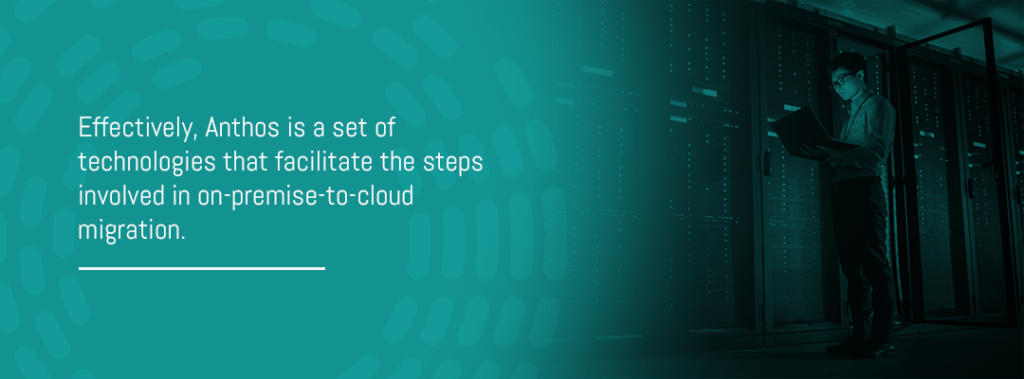
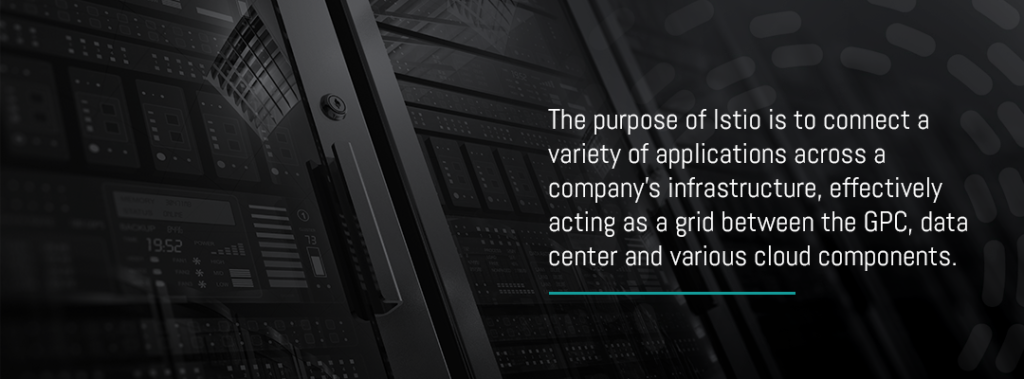
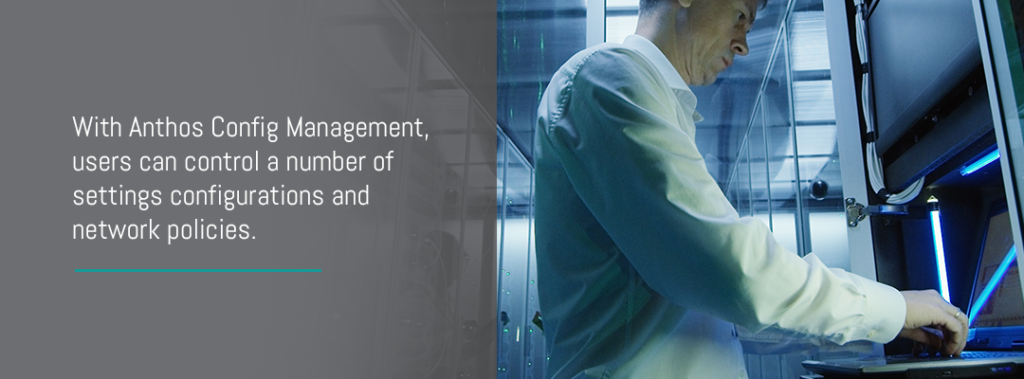
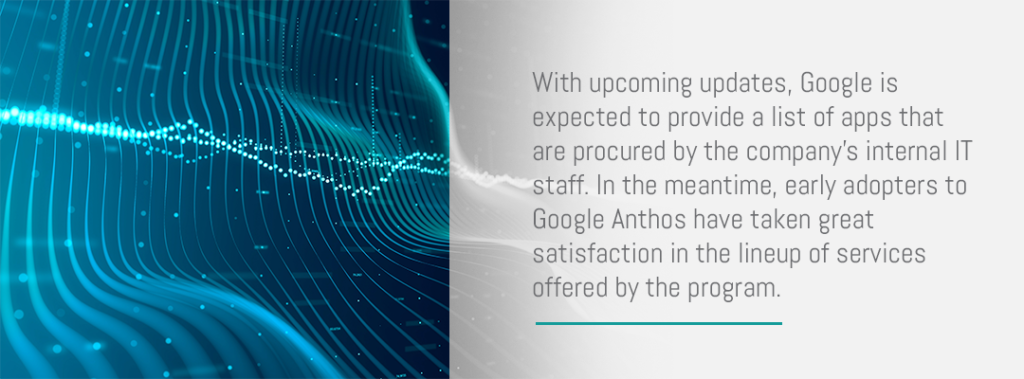
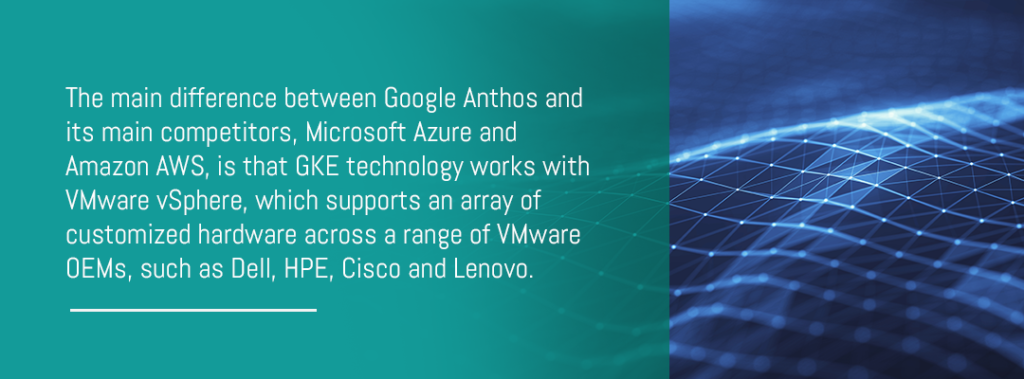
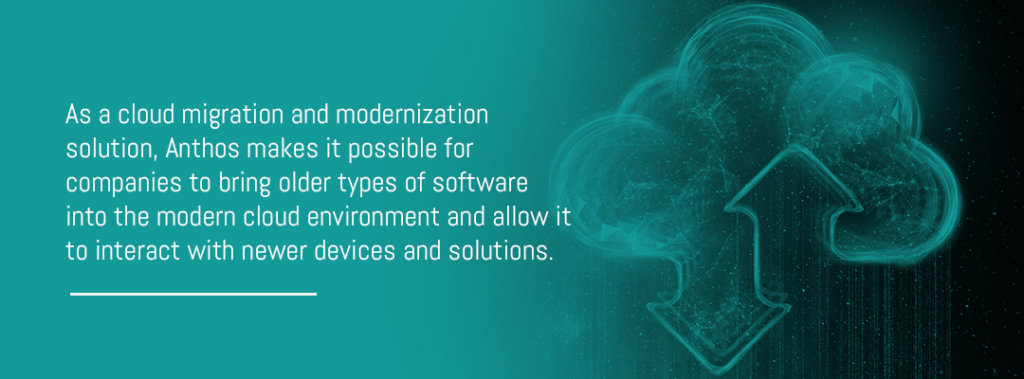
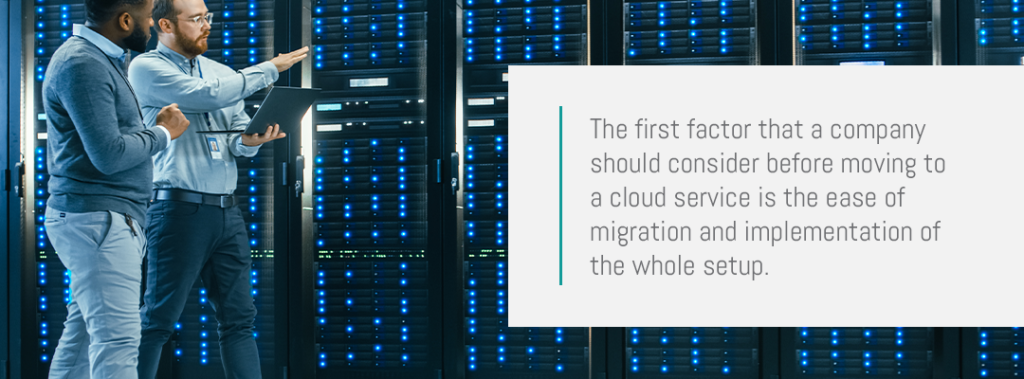

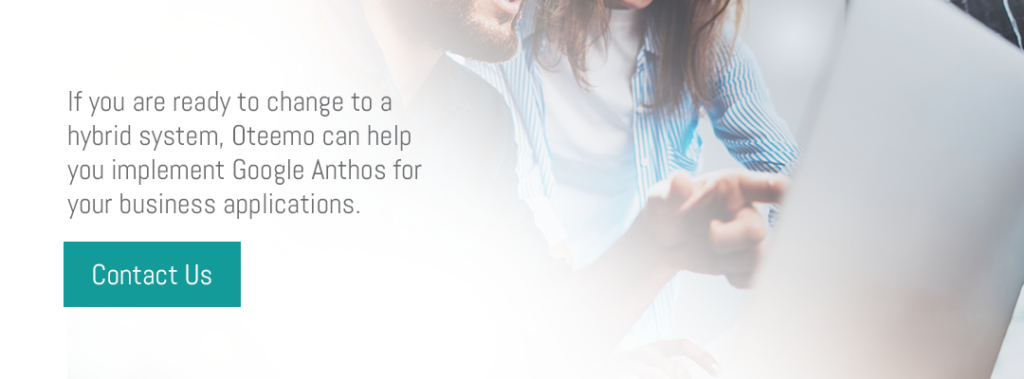







0 Comments